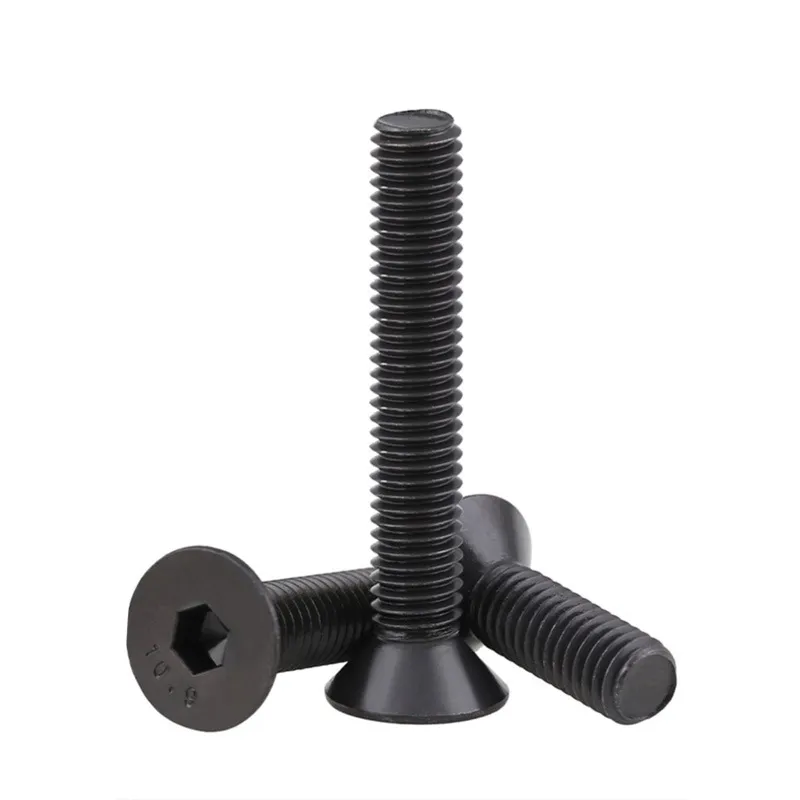

threaded nut
พ.ย. . 22, 2024 20:01 Back to list
threaded nut
Understanding Threaded Nuts A Key Component in Fastening Technology
Threaded nuts are essential components in various mechanical systems, serving as crucial elements in fastening technologies. They are typically hexagonal in shape and designed to fit onto a corresponding threaded bolt or screw, allowing for the secure fastening of parts in a diverse array of applications—from automotive assembly and construction to machinery and consumer products.
The Structure and Function of Threaded Nuts
The primary purpose of a threaded nut is to secure objects together by engaging with a bolt or screw. This is achieved through the threaded interior of the nut, which matches the external threads of the bolt. When the bolt is inserted into the nut and tightened, it creates a clamping force, holding the connected parts firmly in place. This interaction ensures stability and integrity in assemblies, preventing disassembly due to vibrations or external forces.
There are several types of threaded nuts, each tailored for specific applications. The most common include hex nuts, lock nuts, wing nuts, and cap nuts. Hex nuts, with their six-sided shape, are widely used for general fastening purposes. Lock nuts are designed to resist loosening under vibration, making them ideal for critical applications in automotive and aerospace industries. Wing nuts feature “wings” on the sides, allowing for easy finger-tightening, while cap nuts, which have a closed end, provide a finished appearance and increased safety by covering exposed threads.
Material Considerations
threaded nut

Threaded nuts can be manufactured from various materials, including steel, stainless steel, brass, and nylon, each offering unique properties that suit different environments and loads. For instance, stainless steel nuts are resistant to corrosion and ideal for use in marine or chemical environments, while nylon nuts are lightweight and non-conductive, making them suitable for electrical applications.
The choice of material not only affects the functionality and performance of the threaded nut but also influences its cost. For high-stress applications, materials with higher tensile strength are necessary, whereas lighter materials might be preferred in less critical applications to reduce overall weight.
Applications of Threaded Nuts
Threaded nuts are found in countless applications across various industries. In automotive manufacturing, they are vital components that hold together engine parts, chassis, and other critical assemblies. In construction, they secure structural elements, ensuring the safety and stability of buildings and infrastructures. The versatility of threaded nuts allows them to play a pivotal role in ensuring the functionality and safety of numerous products in our daily lives.
Conclusion
In summary, threaded nuts are indispensable in the realm of fastening technology. Their thoughtful design, coupled with the range of materials available, makes them suitable for a myriad of applications. Understanding the different types of threaded nuts and their specific uses is crucial for engineers, designers, and manufacturers looking to create reliable and effective mechanical assemblies. As industries continue to evolve and advance, the importance of high-quality threaded nuts remains steadfast, highlighting their role in innovation and technology. Whether you are tightening a simple furniture assembly or ensuring the safety of a high-speed vehicle, the threaded nut is a small but mighty component that plays an essential part in our engineered world.
Latest news
-
Hot Dip Galvanized Bolts-About LongZe|High Strength, Corrosion Resistance
NewsJul.30,2025
-
High-Strength Hot Dip Galvanized Bolts - Hebei Longze | Corrosion Resistance, Customization
NewsJul.30,2025
-
Hot Dip Galvanized Bolts-Hebei Longze|Corrosion Resistance&High Strength
NewsJul.30,2025
-
High-Strength Hot-Dip Galvanized Bolts-Hebei Longze|Corrosion Resistance&High Strength
NewsJul.30,2025
-
Hot Dip Galvanized Bolts-Hebei Longze|Corrosion Resistance&High Strength
NewsJul.30,2025
-
Hot Dip Galvanized Bolts - Hebei Longze | Corrosion Resistance, High Strength
NewsJul.30,2025

